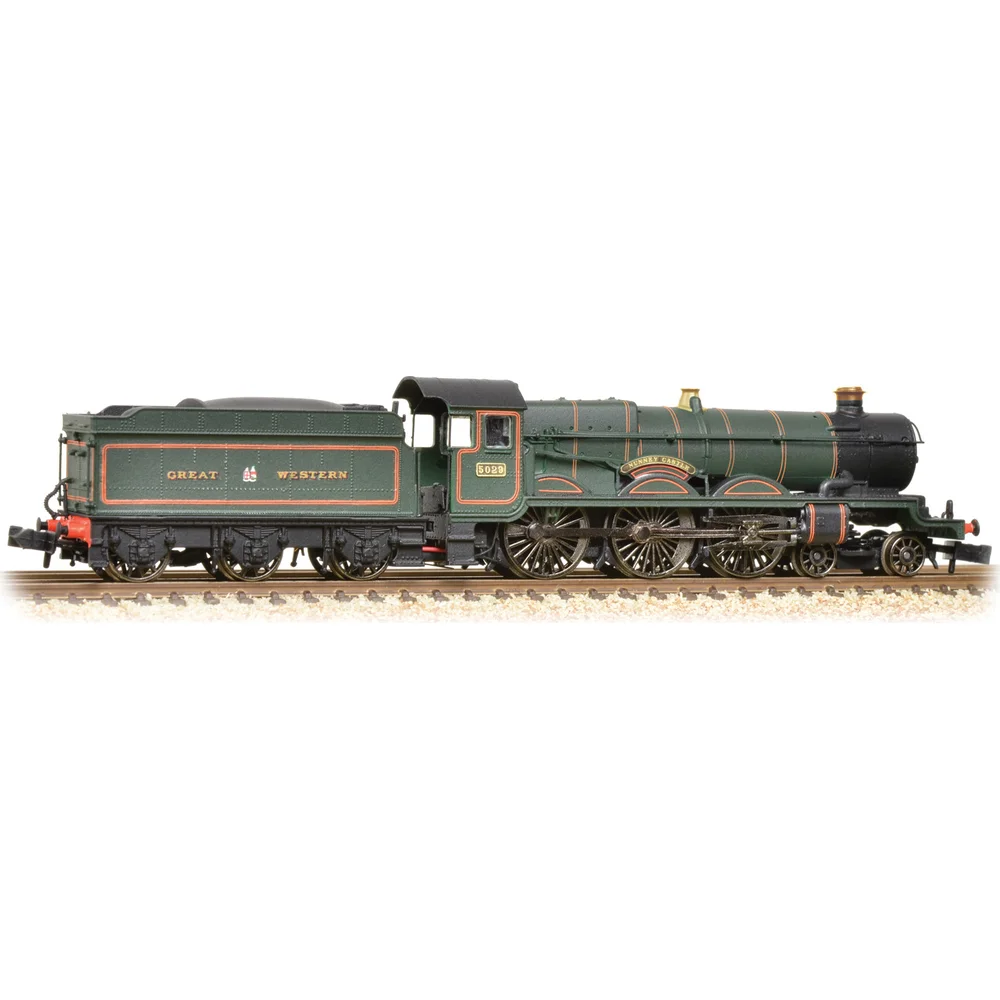Graham Farish 372-033DS
Great Western Railway 4073 Class 5029 Nunney Castle Great Western Railway Lined Green with Crest
Class & Prototype
- Class: Great Western Railway 4073 Class
- Traction: Steam
- Built: 1923-1950
- Total Built: 171
- Running Number: 5029
- Name: Nunney Castle
- Ordered By: Great Western Railway
- Built By: Great Western Railway
- Built At: Swindon
- Built: 05/1934
- Withdrawn: 12/1963
- Length of Service: 29.6 years
- Running Numbers: GWR 5029
- Names: Nunney Castle
The GWR 4073 Castle Class represents the pinnacle of Great Western Railway express passenger design, introduced by Charles Collett in 1923. These legendary 4-6-0 locomotives famously outperformed LNER Pacifics in the 1925 exchange trials, proving their superior fuel economy and performance. With 171 built between 1923-1950, they handled premier services like the "Cornish Riviera Express" for over four decades. Eight survive in preservation, with excellent model representations available from Hornby, Graham Farish, and specialist manufacturers. Essential for any authentic GWR layout.
Operator & Livery
- Operator: Great Western Railway
- Livery: Lined Green with Crest
- Era: 9 - Privatisation
The Great Western Railway (1835-1947) was Britain's most innovative railway company, engineered by Isambard Kingdom Brunel with his revolutionary 7ft ¼in broad gauge system. Known affectionately as "God's Wonderful Railway" and the "Holiday Line," the GWR connected London Paddington with the West Country, Wales, and Birmingham through 3,800 miles of superbly engineered routes.
Renowned for its Brunswick green locomotives, chocolate and cream carriages, and engineering excellence centred at Swindon Works, the GWR pioneered advanced steam technology under chief mechanical engineers Daniel Gooch, George Jackson Churchward, and Charles Collett. The company's legendary locomotive classes—including Castle, King, Hall, and Manor—established performance standards that influenced British locomotive design for decades.
The only "Big Four" railway to retain its original identity through the 1921 grouping, the GWR maintained its distinctive corporate culture until nationalisation in 1947. Today, the company's engineering legacy lives on through extensive preservation efforts, heritage railways, and detailed model railway recreations that celebrate the finest traditions of British steam railway operation.
The GWR Lined Green with GW Crest livery represents the final evolution of Great Western Railway locomotive decoration, introduced in late 1934 and used until nationalisation in 1947. This dignified livery featured the company's distinctive Middle Chrome Green body colour with elegant orange and black lining, distinguished by the iconic "twin shield" crest displaying the coats of arms of London and Bristol side by side.
This livery replaced the earlier "shirt button" roundel branding and marked a return to heraldic insignia reflecting the GWR's founding purpose—linking the two great cities. The twin shield crest featured the arms of the City of London (St George's Cross with ceremonial sword) alongside the City of Bristol (ship and castle), symbolising the railway's role as the premier connection between the capital and the west.
Applied to all passenger and mixed-traffic locomotive classes including Castle, King, Hall, Manor, and Grange classes, this livery survived wartime austerity when most locomotives received unlined black paint. The finest examples continued to receive full lined green treatment throughout the Second World War, maintaining the GWR's reputation for locomotive presentation excellence until the company's final days in 1947.
Modelling Note: This livery is accurately represented by manufacturers including Hornby, Bachmann, and Graham Farish, with Fox Transfers providing authentic twin shield crest decals (reference FRH4104) for detailed restoration work.
